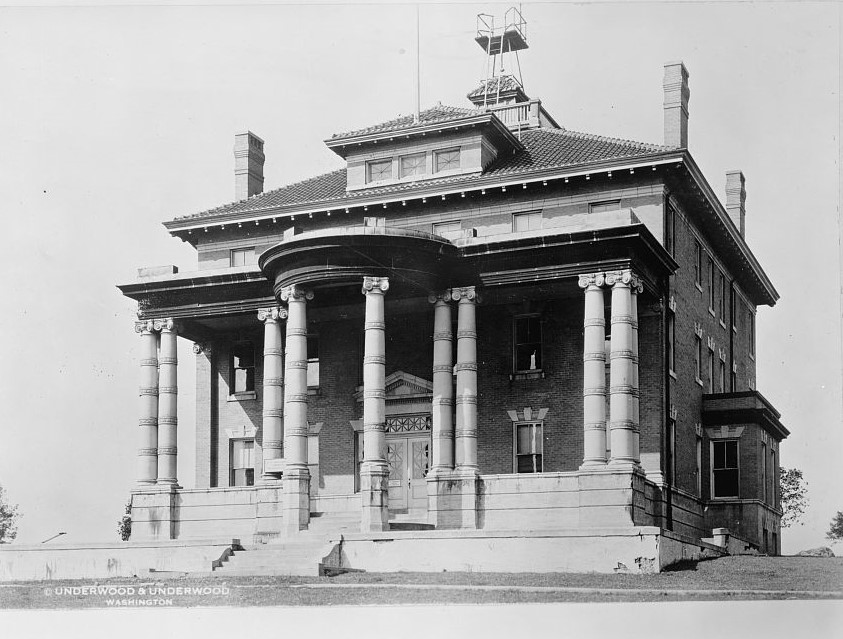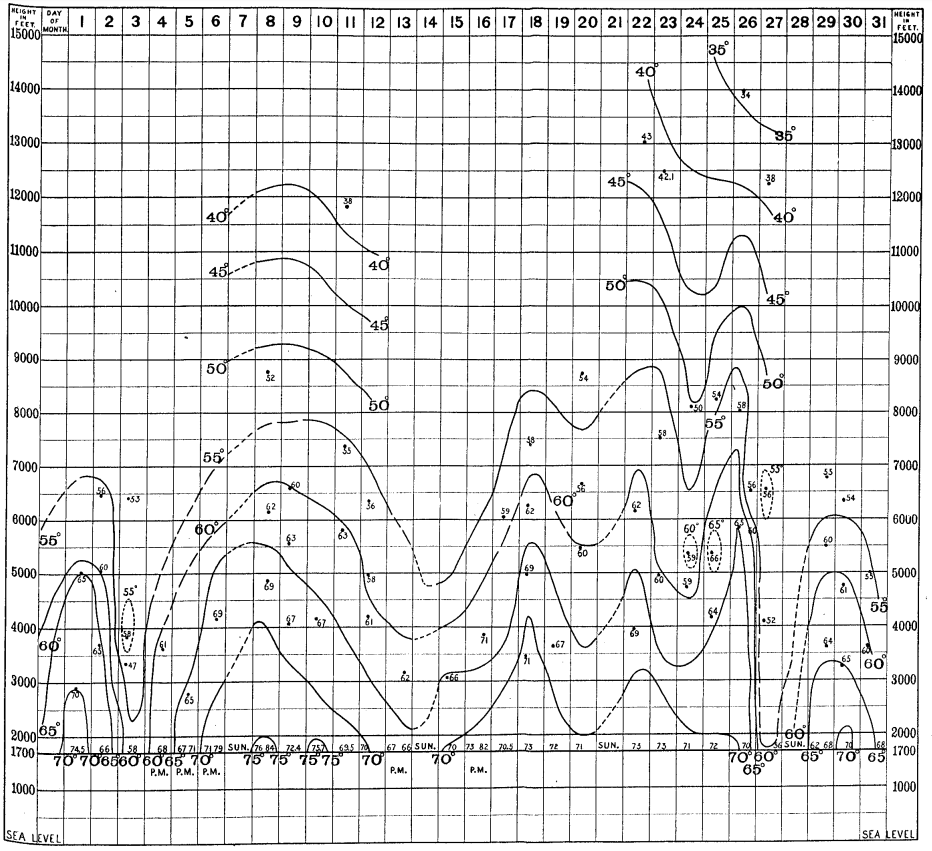The Mount Weather Research Observatory - National Weather Service Heritage

The Mount Weather Research Observatory
By Chris Geelhart (chris.geelhart@noaa.gov)As early as 1897, it was realized that a chart of upper-air observations would be a significant gain to the forecast process. In the early 1900’s, the Weather Bureau undertook an extensive gathering of meteorological research to the continued improvement of forecasts and warnings. To that end, they began assembling the Mount Weather Research Observatory in the Blue Ridge Mountains of Virginia, about 50 miles west of Washington, D.C.
Mount Weather had several areas of focus:
- Measurement of temperature, moisture, and wind aloft at great heights, utilizing balloons and kites.
- Absorption of solar heat, utilizing pyrheliometers and actinometers.
- Dissipation of solar light and heat, utilizing polariscopes.
- Analysis of sunbeams using bolometers and spectrometers.
- Electric condition of the atmosphere using electrometers.
- Radioactivity of the atmosphere.
- Magnetism and motion of the earth.
Construction began in earnest in 1904. Professor William J. Humphreys, of Johns Hopkins University, was selected as the supervising director.
The campus of Mount Weather involved a physical laboratory, power house, and electrical installation to aid in capturing hydrogen gas for use with the balloons. Housing for employees was also present.
By 1906, routine upper air observations were being made. Research into balloon construction allowed for heights never seen before. An apparent world record was set on October 3, 1907, when the balloon reached a height of 23,111 feet above sea level.

From Report of the Chief of the Weather Bureau,
1907.
A setback occurred on October 23, 1907, when the administration building was destroyed in a fire. This building housed much of the living quarters of the staff, and they were forced to live in the power house, barn, and stables. While the observing work continued that winter, no new activities were added. Congress authorized the rebuilding of the administration building, and work was completed by early 1910.
By summer 1909, the upper air launches were expanded to include Sundays. Given that the balloons were generally tethered, additional work was done to test the use of free rising balloons. Due to tests from St. Louis that suggested the balloon could potentially land over 200 miles away, western locations were selected to avoid having the balloons and instruments land in the Atlantic Ocean. A launch on October 6th in Indianapolis reached a height of 14 miles, and one on October 12 in Omaha reached 15 miles. By September 1910, a height of 18.9 miles was reported at Huron, S.D.
In 1914, steps were taken to transfer the upper air functions from Mount Weather to the central U.S. A site at Drexel, Neb. (outside of Omaha) was selected for this purpose. The remainder of the complex was shut down shortly after.
Mount Weather has remained a Federal facility since the observatory closed. In 1928, President Calvin Coolidge used the observatory building as the summer White House. During World War II, it was used as a Civilian Public Service facility for conscientious objectors to the draft. It currently serves as an emergency operations center for FEMA, and plays a major role in the U.S. Continuity of Operations Plan for the government.
